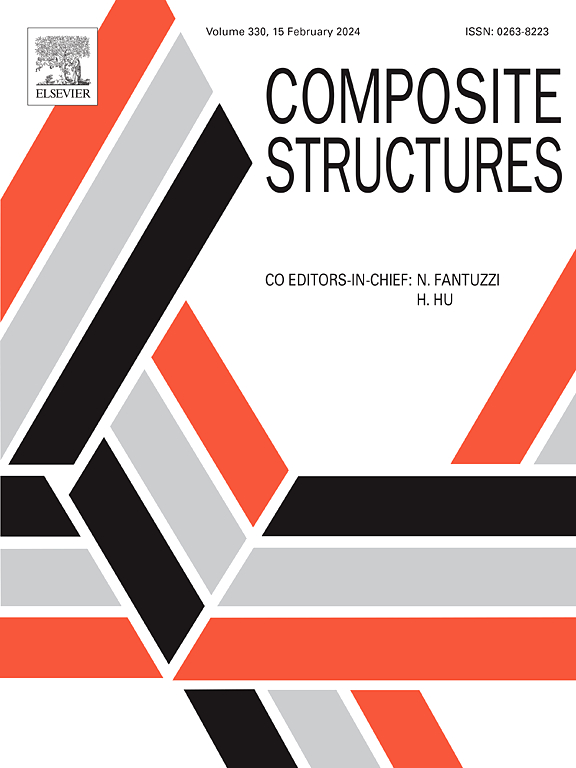聚二甲基硅氧烷短碳纤维复合材料中的 I 型裂纹扩展
IF 6.3
2区 材料科学
Q1 MATERIALS SCIENCE, COMPOSITES
引用次数: 0
摘要
本文采用实验和数值模拟相结合的方法,全面分析了聚二甲基硅氧烷(PDMS)-碳纤维(CF)复合材料的增强增韧和失效机理。通过一系列精心设计的力学实验,对复合材料在不同条件下的行为进行了深入研究。CF 的引入增强了材料的刚度,同时也导致了脱粘和穆林斯效应的增加。我们采用了一个可复制观察到的加固和损伤行为的构成模型。我们的研究通过数值模拟和微观形态检查扩展到裂纹生长分析。随后利用内聚区模型模拟裂纹扩展,从而加深对结构特性和机械行为之间关系的理解。裂纹扩展过程使材料经受加载和卸载的循环,突出表现为 CF 针刺和应力传递的强化作用,以及归因于各种耗散过程的增韧机制:界面脱粘损伤、CF 拔出导致的能量损失、穆林效应和粘性能量耗散。这项研究阐明了 PDMS-CF 复合材料内部复杂的机械相互作用,并提出了优化设计的途径,从而大大拓宽了其在众多领域的应用范围。本文章由计算机程序翻译,如有差异,请以英文原文为准。
Mode I crack propagation in polydimethylsiloxane-short carbon fiber composites
This paper presents a comprehensive analysis of reinforcement toughening and failure mechanisms in polydimethylsiloxane (PDMS)-carbon fiber (CF) composites employing an approach combining experiments and numerical simulations. Through a series of meticulously designed mechanical experiments, the behavior of the composite material under varying conditions is thoroughly examined. The introduction of CFs enhances the stiffness of the material while also leading to debonding and an increased Mullins effect. A constitutive model replicating the observed reinforcement and damage behavior is implemented. Our investigation extends to the analysis of crack growth through both numerical simulations and microscopic morphological examinations. A cohesive zone model is subsequently utilized to simulate crack propagation, providing enhanced understanding of the relationship between structural characteristics and mechanical behaviors. The process of crack propagation subjects the materials to cycles of loading and unloading, highlighted by the reinforcing action of CF pinning and stress transfer, alongside toughening mechanisms attributed to a variety of dissipative processes: interfacial debonding damage, energy loss due to CF pull-out, the Mullins effect, and viscous energy dissipation. This study elucidates the complex mechanical interplay within PDMS-CF composites and suggests pathways for their design optimization, significantly broadening their applicability in numerous domains.
求助全文
通过发布文献求助,成功后即可免费获取论文全文。
去求助
来源期刊

Composite Structures
工程技术-材料科学:复合
CiteScore
12.00
自引率
12.70%
发文量
1246
审稿时长
78 days
期刊介绍:
The past few decades have seen outstanding advances in the use of composite materials in structural applications. There can be little doubt that, within engineering circles, composites have revolutionised traditional design concepts and made possible an unparalleled range of new and exciting possibilities as viable materials for construction. Composite Structures, an International Journal, disseminates knowledge between users, manufacturers, designers and researchers involved in structures or structural components manufactured using composite materials.
The journal publishes papers which contribute to knowledge in the use of composite materials in engineering structures. Papers deal with design, research and development studies, experimental investigations, theoretical analysis and fabrication techniques relevant to the application of composites in load-bearing components for assemblies, ranging from individual components such as plates and shells to complete composite structures.
 求助内容:
求助内容: 应助结果提醒方式:
应助结果提醒方式:


